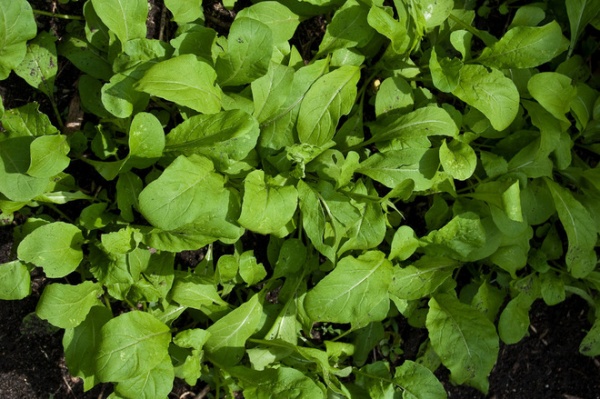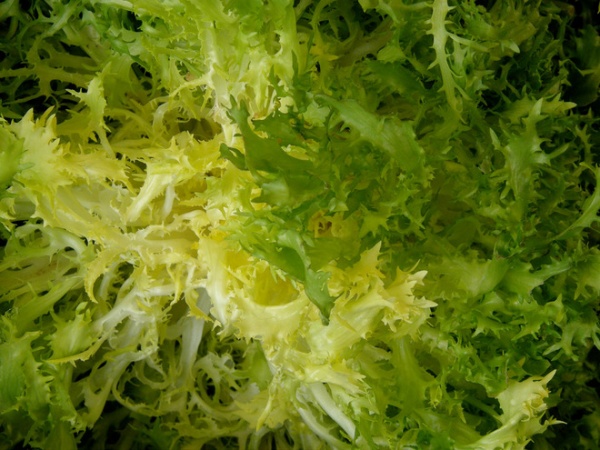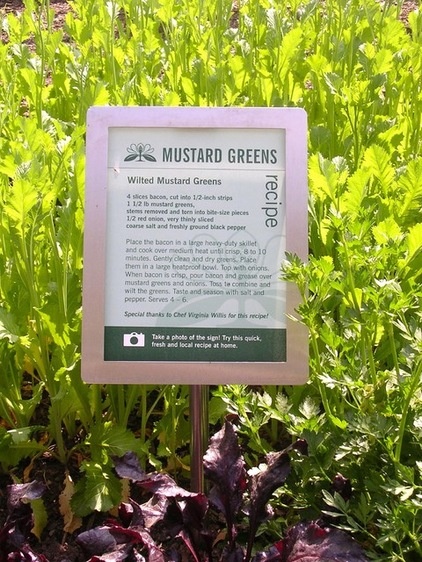Cool-Season Vegetables: How to Grow Salad Greens
http://decor-ideas.org 08/31/2014 21:03 Decor Ideas
Salad greens have been edging lettuce out of the culinary spotlight for some time, finding a place not only in everyday salads but also in sandwiches and main dishes. The good news is that while they may still be a little expensive in the grocery store or at the farmer's market, they’re easy to grow and long lasting in the cool-season garden.
These greens are great in the garden proper, but they also grow very well in containers. Consider planting a mix, both for color and for variety. If you do grow several different greens in a single container, let them crowd together and don’t worry about spacing.
More: How to grow cool-season vegetables

Arugula
Popular Salad Greens
Arugula (this photo), also called roquette or rocket, is one of the premier greens. Its peppery taste adds a tangy flavor to a sandwich. Because of its sharpness, it’s often mixed with lettuce in a garden salad or packaged with other greens as part of a mesclun mix. If left on its own to grow, it can easily reach 3 feet high, but you’ll want to pick the greens early for the best taste. It’s generally sold simply as arugula, but you may also find varieties labeled Apollo, Astro and Sylvetta.
The chicories comprise a large component of salad greens, but some are more popular than others with home gardeners. Leaf chicory, which includes both red and green varieties, is grown like leaf lettuce. Favorites include Sweet Trieste.
Endive is technically another chicory. It’s also known as frisée, a fitting name considering the often frilly leaves. It can be grown like leaf lettuce. Favorites include Frizz E., Galla Frisée, Tres Fine Maraichere, Salad King and Totem.Escarole, which is often grouped with endive, has broader leaves and a white center. Broadleaf Batavian, Coral and Natachaare favorites.
Radicchio is defined by its well-formed head that generally turns a distinctive dark, almost maroon, red. Favorites include Castelfranco, Chioggia, Giulio, Red Verona, Rossana and Treviso.
Mustard greens, as befits the name, are the hottest of the common salad greens. Within this broad category, you’ll find several options; mizuna is one of the most familiar. Mustard greens come in a range of sizes, from low growing to tall; colors, from light green to red to purple; and leaf shapes, from small, cupped and crinkly to broad and smooth. Favorites include Florida Broadleaf, Garnet Giant, Giant Curled, Golden Frills, Golden-Streaked Mizuna, Green Wave, Osaka Purple, Purple Wave, Red Giant, Ruby Streak (a mizuna), Savanna Southern, Tatsui and Tendergreen.
When to plant: Fall to winter (in mild-winter climates); early spring elsewhere. Radicchio is best when sown in mid to late summer, though some slow-bolt varieties can be sown in spring.
Days to maturity: 25 to 40 (arugula, leaf chicory); 35 to 65 (mustard greens); 65 to 90 (endive, escarole); up to 90 (radicchio)
Light requirement: Full sun to partial shade
Water requirement: Regular

Escarole
Planting and care: Sow arugula seeds 1/2 inch deep and 2 inches apart or scatter them over a garden bed. Add a complete fertilizer at planting time. Once the seedlings have developed at least four leaves, thin to 6 inches apart. (You can eat the thinnings.) Keep the soil moist and free of weeds. Arugula reseeds freely and is fairly resistant to pests.
Sow leaf chicory about 1/4 inch deep and 2 inches apart; thin to 6 to 8 inches apart. You can also scatter seeds over a garden bed. Cover with a fine layer of soil and keep moist until seedlings form. Continue to supply regular water and keep the bed weed free. Pests include slugs and snails, aphids, cabbage loopers, cutworms, flea beetles, leafhoppers and leaf miners; downy mildew and fusarium wilt are possible diseases.
Sow endive and escarole as you would leaf lettuce or leaf chicory. Thin to 1/2 to 1 foot apart. They will last into warm weather but may become even more bitter. Blanch them for two to three weeks by tying the outer leaves around the center. Don’t let the leaves get wet during this period.
Radicchio is best started in mid or late summer. Thin from 8 inches to 1 foot apart. Heads will begin to form as the plants reach maturity; if they don’t, harvest the leaves and see if a head will form.
Mustard greens like fertile and well-drained soil, and do best if you don’t plant them where cabbage crops have grown. Sow seeds 1/4 inch deep and 1 to 2 inches apart. Keep the soil most, and when the plants reach between 4 and 5 inches high, thin them to 4 to 6 inches apart. (You can eat the thinnings.) Leave more space if you want to grow plants to their mature size before harvesting. Keep the soil moist and weed regularly. The only pest problems may be aphids, cabbage loopers and flea beetles. Downy mildew might also be a problem.
Sow arugula, baby mustards, escarole and endive every two weeks to ensure a continual crop until weather causes the plant to bolt or die back.

Harvest: It's best to harvest arugula 25 to 40 days after sowing seeds, before the leaves get too large and bitter. Remove the entire plant while the leaves are young. You can also harvest just the leaves from the center of the plant to encourage a second crop.
Pull individual chicory leaves from the outside of the plant or pull up the entire plant. You can remove the outer leaves of endive and escarole for a continuous harvest or simply harvest the entire plant.
Harvest radicchio when the heads are full. In warm-winter climates, cut 1 to 2 inches above the soil level; plants may regrow.
Harvest mustard greens by cutting off the leaves and leaving the stems or by removing the outer leaves once they reach 6 to 8 inches long. You can also pull up the entire plant.
“Cut and come again” harvest methods work well for arugula, endive, escarole and many mustard greens. Simply cut off the tops of all the leaves about an inch above the center and wait for more leaves to grow.
How to grow more cool-season vegetables
Related Articles Recommended












